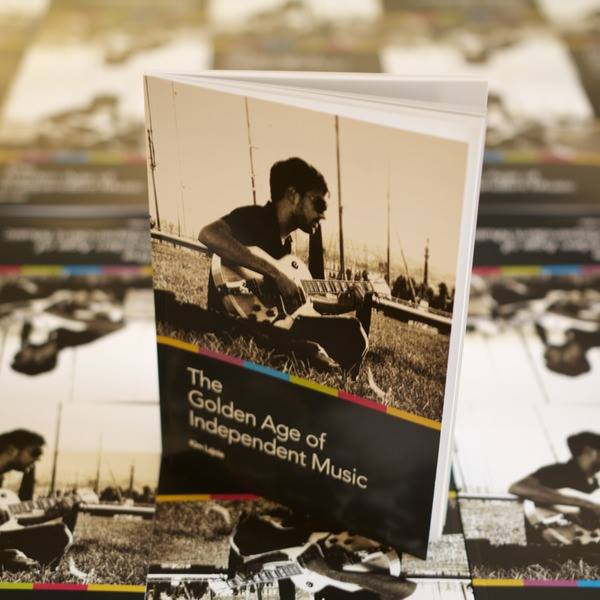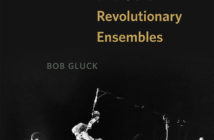Kim Lajoie is a Music Producer and artist mentor, now author who has been active in the music industry for many years writing music and teaching at Institutions. He also managed the production of Melbourne Guru for a year, a publication that was distributed over 8 months, both physically and digitally. It is no longer in circulation. Melbourne Guru was a collective voice from professional writers and artists. He has his own studio Obsessive Music in Moonee Ponds which has been servicing artists for three and a half years. Kim has turned his conversations and insights over time into this small book The Golden Age of Independent Music. In his role as artist mentor he gives industry insights, support and understanding to artists, establishing emotional rapport and encouraging them to do the same with their audience. In fact he argues this is the key to success for any artist to make their work matter, to make their audience fall in love with what they offer, establishing a deep emotional connection.
Kim’s big assertion to artists involves a fierce independence, an artists initiative to go out and do it seeking – “no permissions”. His book is aimed at the music maker (the artist), adjunct music industry and people across the board, who help to make music the force that it is. That is a lot of people in divergent fields. This book is for them with forecasts of what is to come in the Independent world of music and the arts. The book has a Melbourne tone but is applicable to artists across the board anywhere. Full or quirky pictures and humour it has plenty of thought provoking material.
The Golden Age of Independent Music begins by painting an overall picture of the industry. There are five chapters in total covering where we are, how we got here and where we are going with pointers to how “you” as the artist can get where you want to be. Kim reflects on the music industries past and how costs and distribution were the major factors ruling the field, as well as centralised power. Now music media has a more “ephemeral existence” as digital content, he feels niche fields are the way to go for Independents. “Making music that really matters to their audience”. We delve into the history of recorded music gaining some interesting statistics into success stories from majors labels and failures, apparently 90% is an acceptable risk for the 10% that bring in the money for.
Kim ponders the role and meaning of art as a cultural force, types of records deals, hobbyists and new technology and tools that allows anyone to make music and distribute it. “To create art that matters artists must deeply understand the culture and people with whom their art will resonate”. Sub cultures have always existed in the arts as have their audiences, Kim feels this is the way to go, to find your bulls-eye. It’s nice to have the artist’s needs validated, like all of us we need to make a living, eat and look after family to be sustainable.
I like that Kim talks in terms of “we” collectives – an industry, artists, music lovers audience and businesses that support artists to produce and deliver their work live or in product form. We are on the road together the road to the Golden Age of Independent Music. We have all that we need in terms of resources says Kim, I agree. Embracing our niche as artists means “making our music as specialised, as emotionally resonant and as powerful as it possibly can be”. Artists and audiences need each other, they feed each other’s passions and the way to connect now is a vastly different landscape to what is was previously. I like how Kim differentiates what the products of the Independent artists are and the businesses that support them. For some it will be a recording as primary product and live work will support that, or basically studio artists; for others live work will take precedence and recordings will be adjuncts. We reflect on production businesses, promotion businesses, coaching and mentoring, artist partnerships on mutual terms with the artist paying for these service providers, some with the support of Indie labels to share costs.
Chapter four explores what it means to be an artist “wishing to make the transition into the golden age of independent music. Some core qualities of being are suggested here as the things that matter, along with interpersonal stuff. Cultural value, purpose,and articulation of what cannot be said by some “Your art must resonate” are highlighted. We contemplate what it takes of the artist to play that role.
The next passage grates a little for me personally; I would articulate it from a slightly different angle. Most artists make music to begin with to meet inner needs, when we grow up a little it becomes more related to and connected with audience as we learn more about the world and desire to offer our services for others, making art more specifically. It could be songs, it could be screen composition or gaming music, whatever. First it has to matter for us. Kim says it is all about our audience. That seems to be an accepted belief for some out there in the industry. It becomes about audience when audience are established. For those still establishing they are still finding their audience. Art comes from persons and then it extends its presence into the world as a distinct separate entity. The art is the bridge between artist and audience. I have heard others say it is all about the song, dismissing the artist. It is a circle and there is a space in-between where they all meet, artist, songs/ music and audience.
“Going for the emotions” is perhaps a better fitting statement for me. Kim makes a point about the need to make the art and business bed fellows. Artists do need to get more marketing savvy, but that for many of us is like asking us to put our head on backwards. Part three hits the mark, on finding people to like your music with little pointers on where to look out for them and how to summarise or analyse their needs and habits. He includes some great thoughts on attentiveness to audience in live performance mode. We are encouraged to experiment, converse and observe as strategies for getting to really know our audience and meet them on a level playing field. Develop conversations Kim says, lots of them. “The audience should be your guiding force in making and delivering your art”, as “what resonates”.
We then contemplate growth, when to nurture it or tend our existing ground or to go for the fruit and expand seeking assistance beyond what we may already have. In contemplating our future as artists, sustainability and lifestyle are key factors. Kim says “Perfect stability is made of unobtainium” a thought provoking note for artists to thoughtfully tend the ground first, before expanding their growth edges. The path is different for everyone. A lot of help is available to us but we need to seek it out. There is a thought experiment near the end, to get into the specifics of who our audience is and how we can tweak our approach. Really it’s all like being shown the universe but needing to know your home planet before you launch your spaceship. We are the people that will be the golden age of Independent music, so do it, don’t wait for permissions!
Some great tips for us lil folk. A good read.
You can find out more here
http://goldenageofindependentmusic.com/




